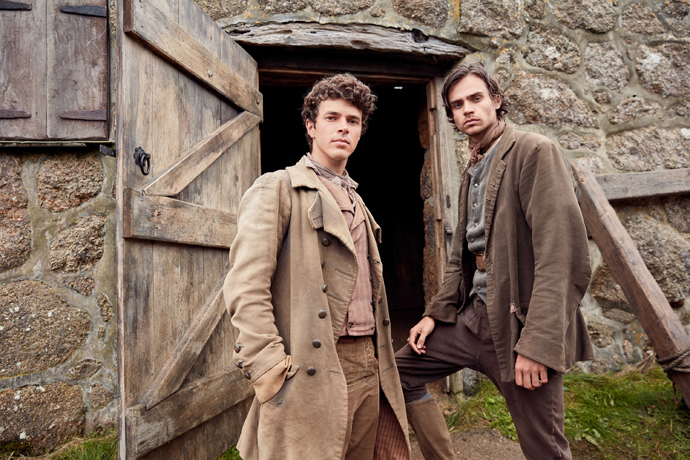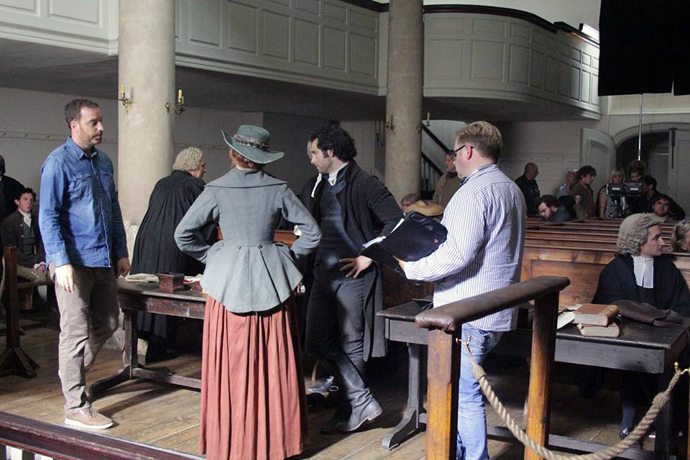How often are Methodists called “those Wesleyan renegades”?
If you’re watching “Poldark” on TV, you’ve heard those exact words — although in reference to fictional Methodists.
Set in late 18th century Cornwall, England, the MASTERPIECE on PBS series revolves around the travails of the Cornish Poldark family, based on fictional novels by Winston Graham. The story takes place around the time when the Methodist movement gained momentum among working-class people in Cornwall, and the third season features a Methodist subplot.
“You cannot tell the story of mining in Cornwall in the eighteenth and early 19th centuries without the story of Methodism in Cornwall,” notes the Methodist Church in Britain’s website.
John Wesley, sometimes with his brother Charles, visited Cornwall on dozens of occasions between 1743 and 1787. The Wesleys weren’t always welcome; many viewed Methodism as radical, even revolutionary.

In the TV series “Poldark,” Methodist brothers Drake Carne, played by Harry Richardson, (left) and Sam Carne, played by Tom York, run afoul of the local vicar when they start singing in church before the parish's wealthy patron arrives. Photo courtesy of Robert Viglasky/Mammoth Screen for BBC and MASTERPIECE.
In the TV series’ third season, now airing, trouble brews when a motley gang of Methodists antagonize the local Anglican vicar by singing at Sunday worship before the arrival of George Warleggan, the parish’s wealthy patron. They’re egged on by Samuel and Drake Carne, the brothers of Demelza Poldark. An affronted Warleggan instructs the vicar to bar the Methodist rabble rousers from “his” church.
It’s fiction, but fiction that echoes some of the same conflicts Wesley and his followers encountered.
“The Methodists in ‘Poldark’ reflect the strong egalitarian impulse within the movement that viewed all people as equals, regardless of status,” said the Rev. Paul Chilcote, professor of theology at Asbury Theological Seminary’s Florida Dunnam Campus in Orlando, Florida. “Early Methodism represented a counter cultural movement that spoke truth to power.”
“Poldark” is the BBC’s flagship program and is wildly popular in the U.K., according to Mandy Briggs, education officer at the New Room in Bristol, England, an 18th century chapel built by John Wesley in 1739. She thinks the series is generating some interest in Methodist history.
details
The Season 3 finale of “Poldark” airs Sunday, Nov. 19 at 9/8c on MASTERPIECE on PBS. The season can currently be streamed in its entirety on PBS Passport.
Learn more about the series at the "Poldark" website.
The New Room also played a role in the series. In 2015, Mammoth Screen, the show’s production company, filmed a scene there, in which the show’s dashing hero, Ross Poldark (Aidan Turner) faces trial for an alleged shipwrecking and for inciting a riot.
“The chapel was turned into a courtroom for the filming,” Briggs said. “All the modern fittings were removed or covered and courtroom props were brought in.”
Briggs added that the New Room staff had a chance to meet the cast.
“And yes, Aidan Turner is lovely!” she said.
At Asbury, Chilcote uses clips from the 1970s TV version of “Poldark” to illustrate aspects of early Methodism in his classes. While the earlier production gave more attention and depth to the Methodist characters, Chilcote is a big fan of the current version.
“I have always loved English history, and particularly the period in which ‘Poldark’ is set,” he said. “It was an age of revolution; a transitional and tumultuous era. People were tested in terms of their vision of life and the well-being of all.” Contrasts shown in the TV series — poverty and wealth; liberation and bondage; tradition and innovation — reflect real struggles of the time.
Chilcote does have some quibbles. For one thing, Methodists are portrayed as a minority sect; in reality, Methodism was pervasive in that region of England by the end of the 18th century. According to the Methodist Church in Britain website, there were 56,000 followers in Cornwall by the time of Wesley’s death in 1791.

The New Room, an 18th century chapel built by John Wesley in 1739 in Bristol, England, was featured in Season 2 of the PBS period drama, “Poldark.” Pictured are actors Aidan Turner (center, in black) and Eleanor Tomlinson (to his left), who play Ross and Demelza Poldark. Photo courtesy of Mammoth Screen.
Chilcote also takes issue with the Methodist character of Samuel Carne, who’s portrayed as a harsh and somewhat fanatic Christian. Chilcote would have liked to see more emphasis on Wesley’s ideals equating holiness with happiness.
“Salvation, for Methodists, meant liberation; it put a song in their hearts,” he said. In the current season of “Poldark,” he notes, there is one scene where a group of Methodists are singing — and the songs are those of Charles Wesley.
The Methodist Church in Britain website takes issues with timing, noting that some of conflicts and the religious fervor depicted in the series actually occurred about 50 years earlier.
But in portraying how Methodism renewed heartfelt faith and challenged the status quo, Chilcote said, “Poldark” hits the mark.
“Those in power felt threatened by the leveling sentiments expressed by the Methodists,” he said. “Methodism did represent a movement that ‘turned the world upside down.’”
Jacobs is a freelance writer living in Plano, Texas.
News media contact: Linda Bloom, (615) 742-5470 or [email protected]. To get more United Methodist news, subscribe to the free Daily or Weekly Digests.
Like what you're reading? Support the ministry of UM News! Your support ensures the latest denominational news, dynamic stories and informative articles will continue to connect our global community. Make a tax-deductible donation at ResourceUMC.org/GiveUMCom.




